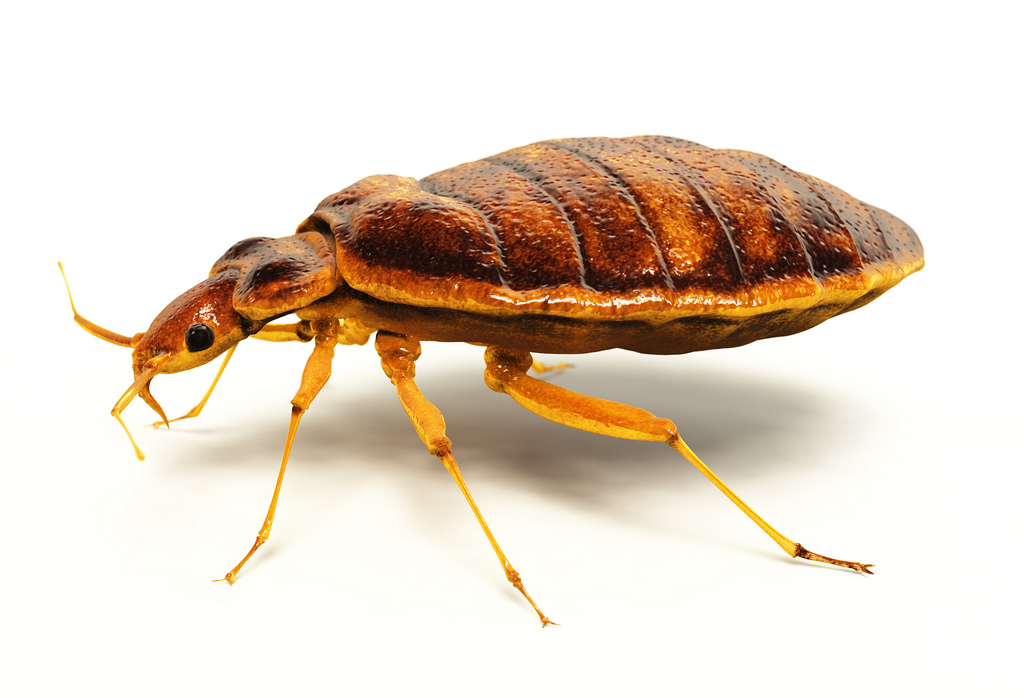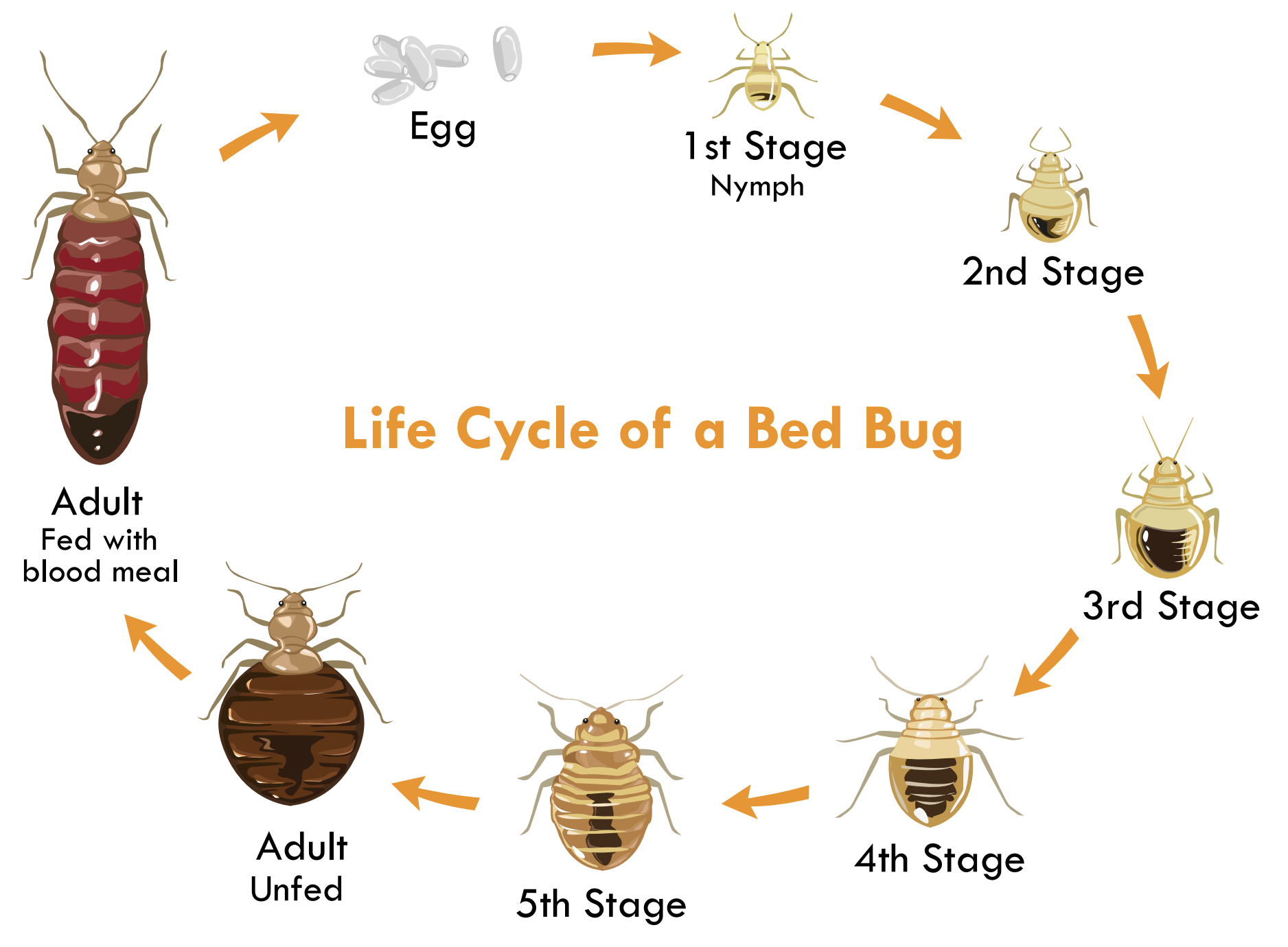
Bed Bugs

Identifying and Exterminating Bed Bugs
They can, however, cause other health issues, so it’s important to prevent bed bugs.
Experts believe the recent increase in bed bugs in the United States may be due to more travel, lack of knowledge about preventing infestations and bed bugs increased resistance to household pesticides.
The good news is that there are ways to control bed bugs. Call Trademark Pest Control today for a full inspection and a customized program to rid your property of bed bugs.
Bed Bug Appearance
Adult bed bugs, in general, are:
– About the size of an apple seed (5-7 mm or 3/16 – 1/4 inch long)
– Long and brown, with a flat, oval-shaped body (if not fed recently)
– Balloon-like, reddish-brown, and more elongated (if fed recently)
– A “true bug” (characteristics of true bugs include a beak with three segments; antenna that have four parts; wings that are not used for flying; and short, golden-colored hairs)
– Smelly, with a “musty-sweetish” odor produced through glands on the lower side of the body
Young bed bugs (also called nymphs), in general, are:
– Smaller, translucent or whitish-yellow in color
– If not recently fed, can be nearly invisible to the naked eye because of coloring and size
Bed Bug Eggs (shown next to rice to show how small they are)
– Tiny, the size of a pinhead
– Marked by an eye spot if more than five days old


Bed Bug Life Cycle
The life cycle of a bed bug is shown in the photograph. During its lifetime, a bed bug will go through the following stages (starting from the top, moving counterclockwise):
– Eggs (1 mm)
– 1st stage nymph (1.5 mm)
– 2nd stage nymph (2 mm)
– 3rd stage nymph (2.5 mm)
– 4th stage nymph (3 mm)
– 5th stage nymph (4.5 mm)
– Adult bed bug
Call Trademark Pest Control for a full inspection and customized plan to exterminate bed bugs in your home.
